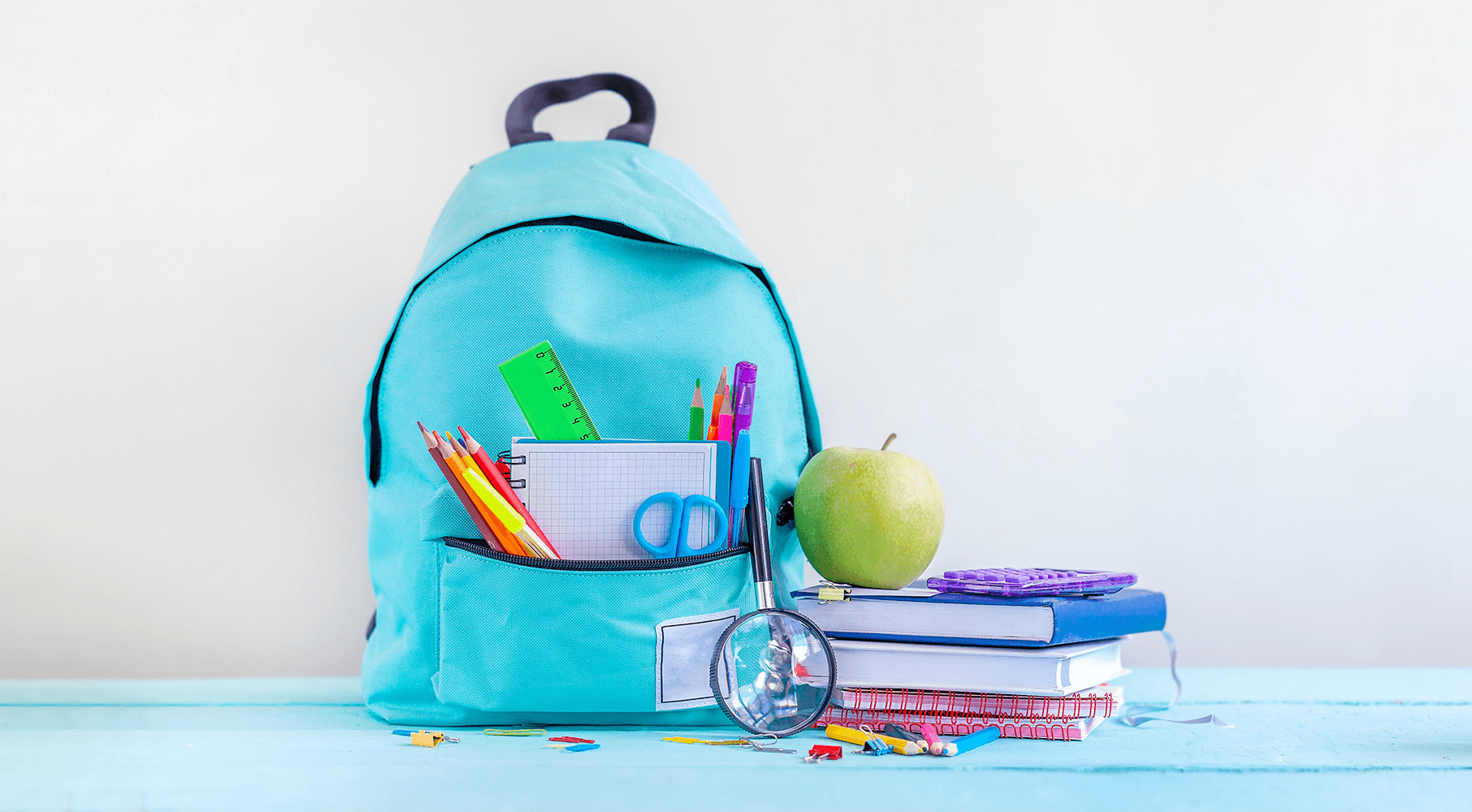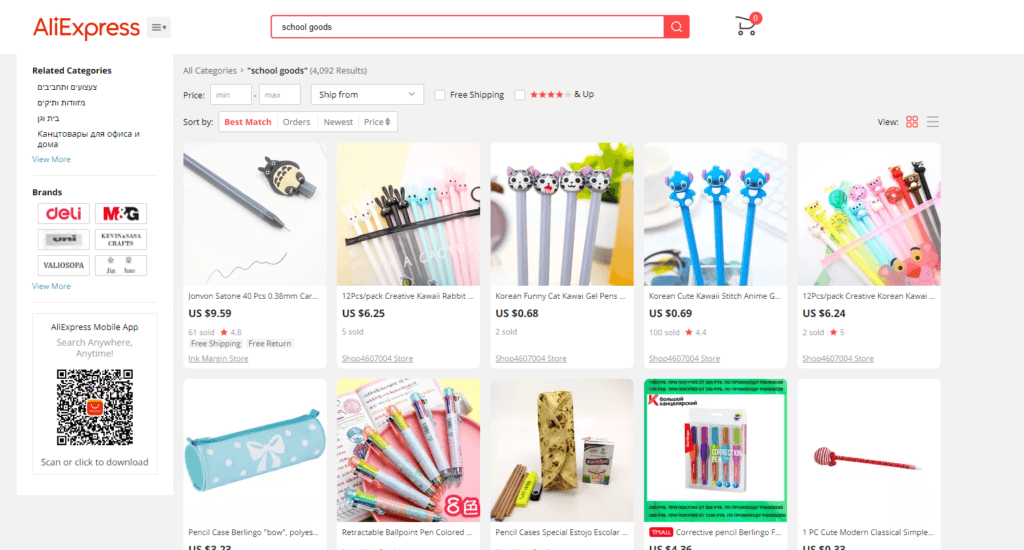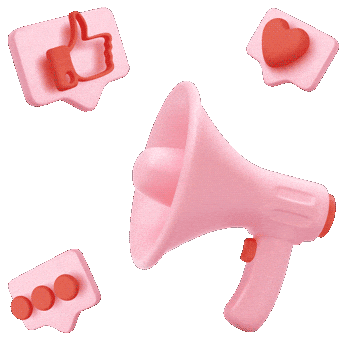Back to school. Earning money on school items programs

Every year, starting in July, we recommend publishers to focus on studying-related products and services. By mid-late August, demand for such products heats up to the maximum, consumer expenses grow, and publisher earnings soar. But as appealing as the benefits are, so severe is competition. Year over year, it becomes harder to spark interest among sophisticated users.
In this text, we’ve gathered for you a bunch of non-trivial tips for managing “Back to school” programs and promoting school and study items—all to earn as much as possible.
Why Back to school offers matter
Pre-academic year shopping is an indispensable and important process for schoolchildren, students, and their parents. Experts calculate every year how much it costs to gear up a child for a new school year. In 2020, preparation costs for one US schoolchild totaled $789. Student expenses are even higher.
Statistics also suggest that at least 55% of people prefer buying school items online.
It is July and August when demand for such products and services gains 50% compared to other months. However, there are some late buyers in September, for in most European countries, as well as in the US, Canada, and Mexico, the academic year starts in August-September.
As you can see, school and studentship can be profitable verticals. But remember that it’s not only you who tries to capitalize on studying-related items: the market counts thousands—or even tens of thousands—of publishers, brands, and companies. To stay afloat, invest enough time and thought in designing an optimal marketing strategy to make the best use of back-to-school programs.
Don’t limit yourself to basic products
The Back to school vertical can provide profit to any publisher, no matter the niche. But the key thing here is associating a product with a newsworthy event.
Stationery, gadgets, school uniform, bags and backpacks, books are great offerings, but there is much more fish in the sea. Come up with what schoolchildren may also need— e.g., lunchboxes, hobby and art stuff, office furniture for home studying, etc. Last but not least, gifts for teachers constitute a standalone large category.
Since many will have to study at home due to the pandemic, offer household items to help make learning more comfortable and enjoyable. This category comprises posters and banners, plants, home apparel, textile goods, mugs, and sports equipment.
Parents spend more on high-tech products. Online education, courses, software—everything finds its consumer. And since tutors also see high demand, consider driving traffic to freelance marketplaces and hiring services.
With the start of the pandemic, personal hygiene products—sanitizers, disinfectant wipes, masks—broke into the top of the most popular school items, in line with stationery and uniforms.
However, leading groups are still writing materials, paper, notepads, clothes, and shoes. In the electronics vertical, laptops, headsets, and speakers are ahead of the game.
Drive traffic to marketplaces
People love seeking—and finding—everything in one place. You must agree that it can be not very convenient to sift through one online store to find books, then leave for another one to find stationery, and then resort to another one for gadgets. It’s always better to find everything here and now.

And this is when marketplaces come into play. You know where to drive the best part of your traffic: AliExpress (see screenshot), AliBaba, and eBay. Bring the main focus on helping a consumer save their time (all in one place) and money (deals, free delivery for large orders, etc.).
Tip. Imagine a banner promoting a Xiaomi smartphone that is sold on a marketplace. A user clicks on the banner but wants to roam across the marketplace and check out other offerings. As a result, they buy a gadget from another brand. In this case, the purchase will be attributed to the publisher who created and deployed that Xiaomi banner, for it was their affiliate link that led the user to the store. This is how affiliate marketing works.
Offer more value
We live in the world of severe competition. Users enjoy a wealth of options. This is why you need to incentivize a user to buy from you. Discounts, deals, bonuses, and cashback are good examples of such incentives. One of the most common discount models is coupons: search queries such as “product/brand + coupon” are hugely popular.
Host contests, giveaways; provide long-standing or new customers with good discounts. Trust us, people will appreciate it.
Statistics show that during the back-to-school sale, it is the discounts and deals that people seek first. Then go free delivery, competitive prices, and product quality. Keep in mind that the segment of elite items is too small for such a massive sale.
You can merge this profit with another powerful sales model, gamification. Prompt users to pass simple quests and get rewards. For instance, stationery distributor Staples offers users bonuses for finding differences between similar images (see screenshot).

Use social media, not only the most popular ones
According to a recent Hubspot report, social media are the most popular business model for promoting and selling products. And you may want to not limit yourself to well-known social media: employ some low-key platforms. The latter may be not that popular in some countries but can work great for other regions and specific segments of the target audience.
Let’s take Pinterest. Numbers suggest that 27% of parents in the USA use this social media to create shopping lists in the back-to-school period.
Retailers all over the globe show a higher interest in pins, visual content that users can bookmark and get inspired by. Pins can be a great format for product selections.
On Twitter, you can promote products using hashtags, one of the platform’s core mechanisms. Type the hashtag in the search bar and you will see the first ad right away: a nearest salon search app invites parents and their children for a pre-school appearance refreshing.

Think on which platforms your target users hang out. For instance, schoolchildren and students love watching live sessions on Twitch and YouTube; these platforms can be great places to publish ads.
Consider embracing forums, thematic communities on social media and on messengers. Seasoned marketers promote products through content on Reddit.
Sell through content
Shopping before the start of the academic year can be a tough task. What brands and products to choose, where to find them, at which prices? Make your users’ lives easier with helpful content. They will appreciate that.
Undoubtedly, good content sells. Here are some working formats:
- Checklists like “Everything you need to prepare a first-grader for school.”
- Articles offering comparisons of products or prices.
Video, users’ favorite format. Invoke video reviews, advertising campaigns with dances and songs, stories, lives—use anything you like.

- Ask your consumers what they need, and they will tell you. Carry out surveys, prompt users to share their opinion, read comments and reviews on your rivals’ websites. Last but not least, employ user-generated content.
- Selections. In this format, your fantasy and creativity is the only limit. Create selections of best laptops for children who want to become grand artists; best sneakers for sports; school outfits, etc.
- Instructions and guides. From tips for getting on well with classmates in a new school, to recipes for take-out lunches.
- Cases and success stories. Great for promoting online courses. Regardless of the format you handle, make use of storytelling, a format that may be highly effective and versatile.
- Templates. Ultra helpful content, no matter what it is: calendars, planners, checklists, or schedules.
Cover acute, hot topics. For instance, how to protect a schoolchild from COVID-19 if they study at school. Or, share some recommendations for studying at home.
To find hot-button topics, monitor social media, check user queries and trends using tools like Google Trends.
Speaking of which, your content may not be directly related to a product you advertise. What is important is providing people with real value. By doing this, you will establish a rapport with your audience, win users’ trust, and—finally—promote products and services better.
Come up with original slogans
Think how you could leverage consumers’ sore spots to create a catchy slogan for your advertising campaign, banner, or targeted ad. Your allies will be psychological triggers and good understanding of what your audience needs and what can stimulate customers to buy.
Here’s a simple case. If we plan to attract people who want to spend money wisely, buy high-quality things their children will be using for long years, say something like “top-grade study appliances are a reliable investment in the future.”
Today, most brands emphasize children’s mental health. To the point, backpack and bag manufacturer Jansport launched a “Lighten the Load” mission—to position itself as a source of support for young people that are going to face common school problems.
Remember that not only are most parents concerned about buying everything that their child may need, but also making the upcoming year as comfortable and joyful as possible. Optimistic and cheerful slogans will do nicely (consider something “A new academic year is a new life, new endeavors.”).
Another good example of an inspiring slogan is Amazon’s advertisement. In its video, the company shows a teacher who names students by their future jobs rather than by their names. The central phrase of the campaign was “When it’s time to get back to classes and make dreams come true, Amazon is here with everything you may need, from A to Z.”
A few more insights
- Numbers tell us that when fathers are in charge of shopping, they are ready to spend at least 10% more than needed on their child’s needs. If your target audience is men, it might be safe to show them ads of more expensive items. Don’t make the mistake typical of conservative marketers and remember that today, it’s not only a mother’s call to prepare children for school. So don’t only focus on women.
- Not only do schoolchildren get back to their desks, but also students. In this context, you need to work on targeting settings and the assortment. Beside study stuff, students need things that will make their dorm life more comfortable: dishes, kitchen devices, textiles.
- Teachers and professors are also preparing for the academic year. For them, you can create a dedicated advertising campaign comprising industry-specific tips and items.
- You’d better concentrate on more specific targeting options, depending on your audience’s needs. Segmenting is key. Major brands follow this doctrine. For example, Adidas has a special page with back-to-school products for women:

- The biggest spending items during the Back to school period are school uniforms, clothes (because it’s important for kids to dress up and look trendy and fancy), and gadgets (just because they are pocket-hitting). Apparently, these are high-average-bill verticals.
- One more thing: a tip for future fruitful seasons. Start arranging for the back-to-school period reasonably in advance. A few months before the sale begins, work out your budget, advertising campaigns, creatives, and content—to start promoting products at the front of the line.
Users have different backgrounds and needs. Some are looking forward to returning to classrooms, while others are not happy with September approaching. Some will study at home, others will go to school. Some will have to go on an economy drive, others will spend more than usual.
Like in any other major sales event, tests and diversity—of slogans, advertising campaigns, business models, and products—are the determinants in the Back to school season. Experiment and earn!






